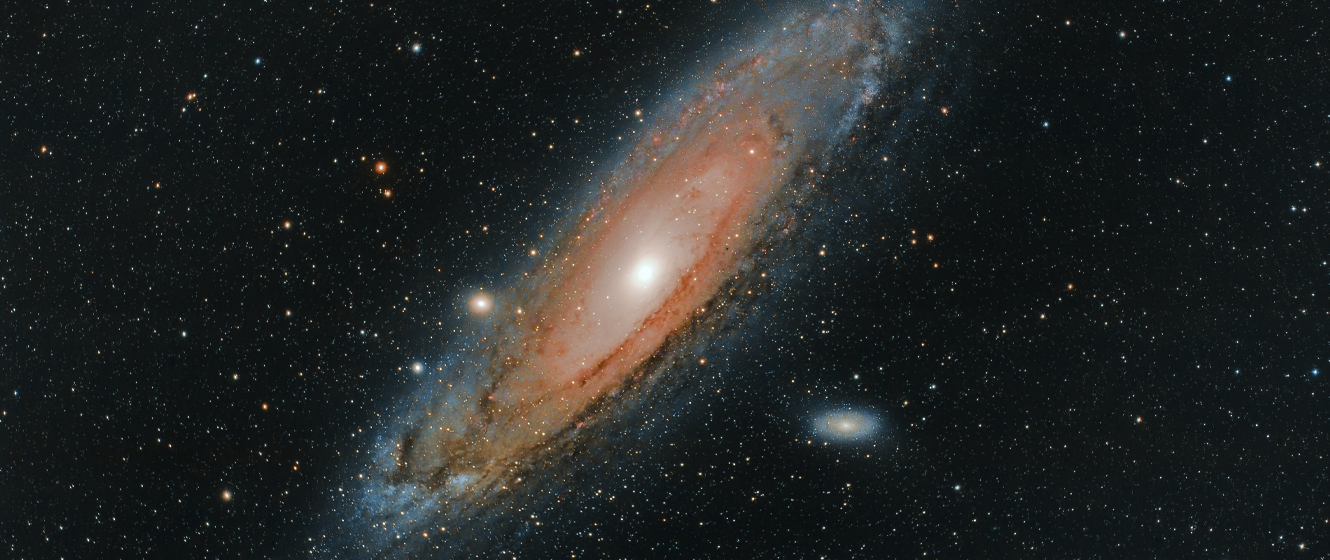
The Andromeda Galaxy has been seen in our skies for generations. The first astronomer to formally describe the Andromeda Galaxy was the Persian astronomer Abd al-Rahman al-Sufi. Al-Sufi wrote that the Andromeda Galaxy was a “little cloud” in the year 964 CE. Historically speaking, this description of the Andromeda Galaxy as a “cloud” or “nebulae” carried with it all the way until the 20th century. It was the scientific consensus that the Andromeda Galaxy was part of our own Milky Way Galaxy, like the Orion Nebula or the Lagoon Nebula (both of which are similarly bright). It wasn’t until nova events were observed in the Andromeda Galaxy that the notion of Andromeda’s status as a nebula within our own galaxy began to change.
History of The Andromeda Galaxy
In the year 1917, the astronomer Heber Doust Curtis observed nova events in the Andromeda Galaxy. By studying the light curve of these nova events, he found that they were remarkably similar to those in the Milky Way except for one difference: they were much dimmer. This could only be explained by the Andromeda Galaxy being significantly further away. This was one of the first arguments of the “Great Debate” in cosmology at the turn of the 20th century. It wasn’t until the astronomer Edwin Hubble observed Cepheid variable stars (stars whose variability and luminosity have a strong relationship and serve as useful distance markers in cosmology) that the debate was settled: Andromeda was its own galaxy. This jump-started the modern era of cosmology.

How to find the Andromeda Galaxy
The Andromeda Galaxy is located in the constellation of Andromeda, most visible in the Fall and Winter skies. The Andromeda Galaxy has an apparent magnitude of about +4 and is visible to the naked eye without any optical aid, however, this can be a challenge in light-polluted skies. To find the Andromeda Galaxy, look for the four stars that make up the body of the constellation of Pegasus. Once you find these four stars, find the star Alpheratz.
From Alpheratz, look for the three main stars that make up the body of the constellation of Andromeda: Delta Andromedae, Mirach, and Almach. From Mirach, look for two stars that sit perpendicular to one another in the sky: Mu Andromedae and Nu Andromedae. You’ll find the Andromeda Galaxy next to Nu Andromedae. Using averted vision, you should be able to spot the galaxy as a very faint smudge in the sky. We recommend using binoculars to verify should you have trouble finding the galaxy.


Learn More
Interested in learning more about the planets and the universe? Not sure where to begin? Check out our Astronomy Hub!
This Article was Last Updated on 07/25/2023











